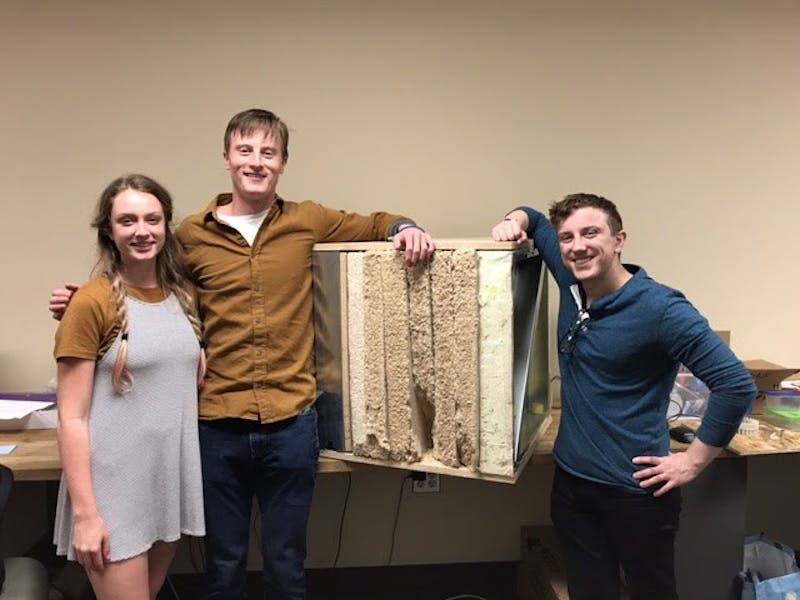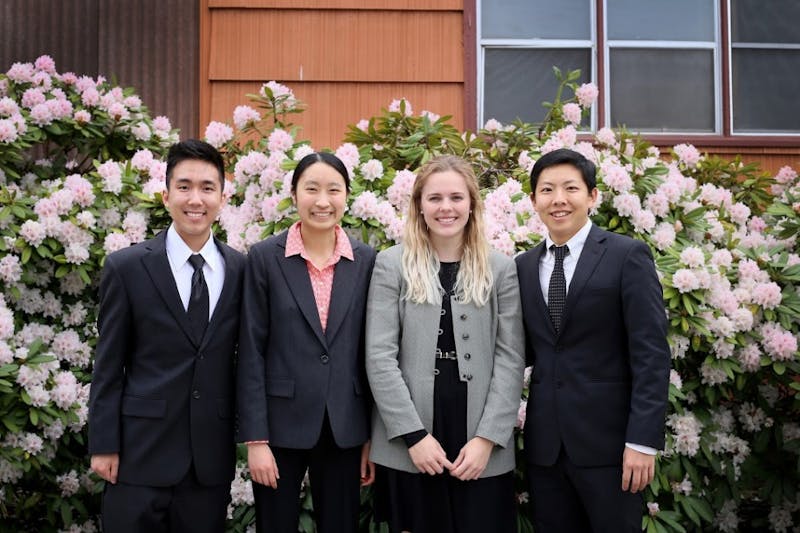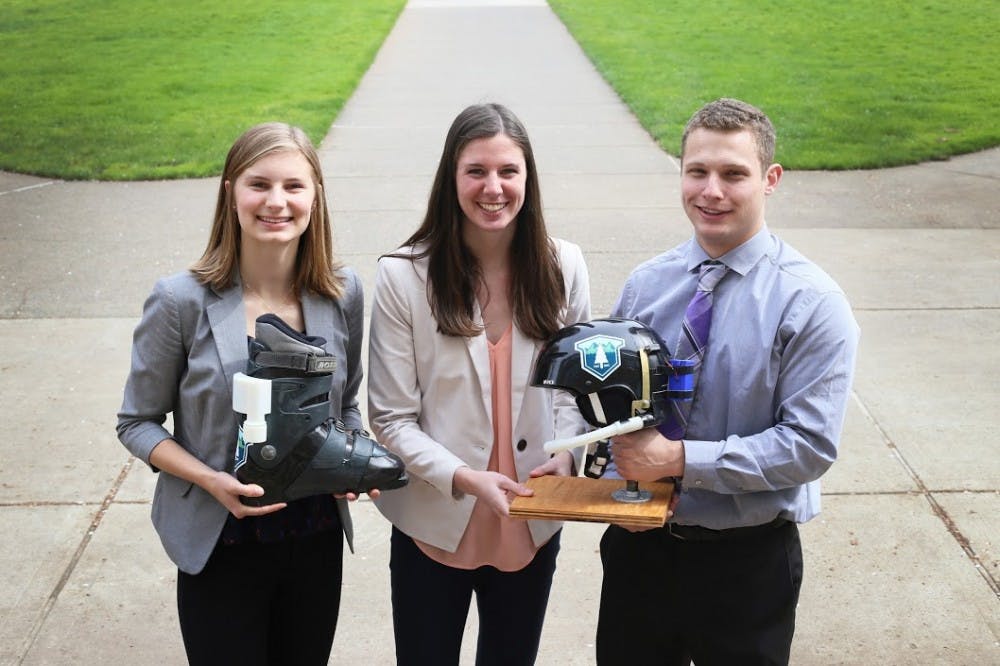All senior projects — the culmination of hours and months of work — are something to be proud of. For engineering majors, often these projects come in the form of machines or devices built to solve a real-world problem; this year was no exception. The Beacon sat down with the creators of several of these projects to find out how they work:
Tree Well Suffocation Prevention Device — Mechanical Engineering
After taking an avalanche safety course last winter, senior mechanical engineering majors Demri Horton, Amy LeBar and Joe Dummer set out to find a solution to the “tree well” problem.
A “tree well” is when the surface snow surrounding trees solidifies but the snow underneath remains powdery to create voids of loose snow that skiers and others can fall into. This is the No. 2 cause of death for skiers and snowboarders — meaning it’s responsible for 20 percent of deaths among people who recreate in the snow.
“We want to create a small, light device that can help save lives,” Horton said.
The group spent all of last semester brainstorming to come up with a device that would reduce deaths caused by tree wells. They eventually created a two-piece device to both prevent suffocation and also signal for help.
The first part attaches to the side of a helmet and contains a gyroscope, a sensor that detects orientation, in order to decipher when the wearer has wiped out or is trapped. When triggered, a mask is deployed that filters oxygen from the snow and disperses carbon dioxide out the back so it is not breathed in.
The second part is an alert system on the boot that releases smoke for up to 90 seconds, since 90 percent of those trapped in tree wells can’t escape by themselves.
The group’s goal is to submit the designs to a company in the ski industry to address the problems caused by tree wells.

Infinity Homes — Mechanical Engineering
Zachary Neubauer joined E-Scholars last year in hopes of developing a business plan for sustainable construction. The junior mechanical engineering major joined two seniors, Patrick Doherty and Helena Molinski, for their capstone project: “Infinity Homes”.
The idea for “Infinity Homes” came from an architectural and engineering design problem to make “complex ecosystems of products and processes that come together into a house and make them better.”
For their home, the group used a biocomposite insulation from an East Coast company called Ecovative. Insulation is typically made of recycled newsprint, fiberglass and wool, but this insulation is made of a biodegradable mushroom fiber.
The steel frame construction used in their house is all recyclable. The modular design itself is small, about 1,100 square feet, and easy to assemble and take apart in order to minimize waste.
The goal of their project is to lay foundational works so that these techniques can be implemented in neighborhoods elsewhere.
“It was a great opportunity to see what it takes to lay a house and to find your niche and specialty,” Neubauer said.
Along with being their capstone, the group is entering the project in a “Race to Zero,” a competition supported by the Department of Energy. The group will be competing in Colorado next week.
“The whole experience has been a great learning process,” Doherty said. “It would be amazing if these ideas were developed further.”

Holla-At-Yo-Gram — Computer Science
This group’s inspiration came from a group of UP seniors’ project last year — “The Human Paintbrush” — a virtual reality painting game built with an Xbox connect device to detect movements. The game allows the player to paint with their limbs.
Seniors Sara Meisburger, Matthew Hino, Christine Chen and Reece Teramoto hoped to expand the capabilities of the game to make the virtual reality experience more inclusive.
The team rebuilt the human paintbrush, which took the better part of their senior year, but adapted it to improve the playing experience for all.
They created a hologram using a television and a sheet of plexiglass. They laid the television on the ground and displayed a rotating object, which reflected through the plexiglass to appear as a 3-dimensional object floating in midair.
The drawing from the human paintbrush loads and saves, and as it does, it is displayed on the hologram.
“The project opens up the game to the living room,” Meisburger said.
“We hope students venture to expand on the project and the viewer’s experience,” said Hino. “Virtual reality is such an up-and-coming technology and you could have some really unique experiences.”








